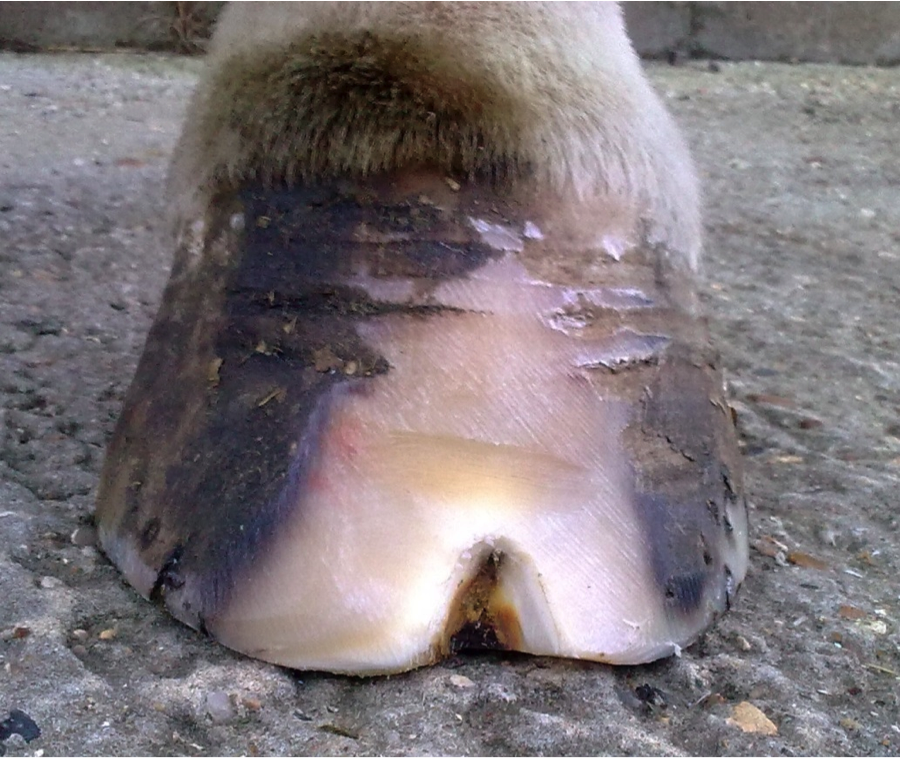While the first week of June is coming to an end, May showers are persisting in many areas of the country.
Although proof is elusive, there is a link that wet and humid conditions contribute to white line disease, or seedy toe.
Excessive moisture softens the foot, offering an easier pathway for dirt, grass and seeds — hence the name. These particles can separate the hoof wall from the laminae at the white line and fill the cavity. The cracks that form in the hoof wall, as well as fissures in the white line, are areas where bacteria and fungi can invade and wreak havoc.
So if you work in a wet, humid region, chances are good that you have a horse or two dealing with seedy toe. Chris Pardoe, a working farrier and researcher based at the Royal Veterinary College in Hatfield, England, is no stranger to moist climates. He urges farriers to take precautions.
“You need to wipe down your tools and knives with disinfectant between cases and yards,” he told attendees of the 2014 International Hoof-Care Summit in Cincinnati. “If you’re leaving debrided hooves open to the air, please use a topical medicated spray just to give them some kind of help.”
When debriding hoof cracks and cavities, your tools can become contaminated with infectious organisms that can be spread to other feet that you trim. A little prevention can save you from having to treat more cases of seedy toe, and your clients will appreciate the effort, Pardoe says.
“I’ve had it myself when I’ve been to a yard and the client says, ‘Oh, the horse has a bit of seedy toe,’” recalls the Associate of the Worshipful Company of Farriers. “Suddenly, I think, ‘Actually, I was in the yard before that working on a horse with seedy toe. I hope it wasn’t me who brought it here.’ So, please be aware of hoof and tool hygiene.”

Photo courtesy of Chris Pardoe
After debriding a seedy toe, Chris Pardoe urges farriers to pay particular attention to hoof hygiene. The Royal Veterinary College researcher and farrier suggests wiping down tools and knives, as well as taking the time to disinfect them.







